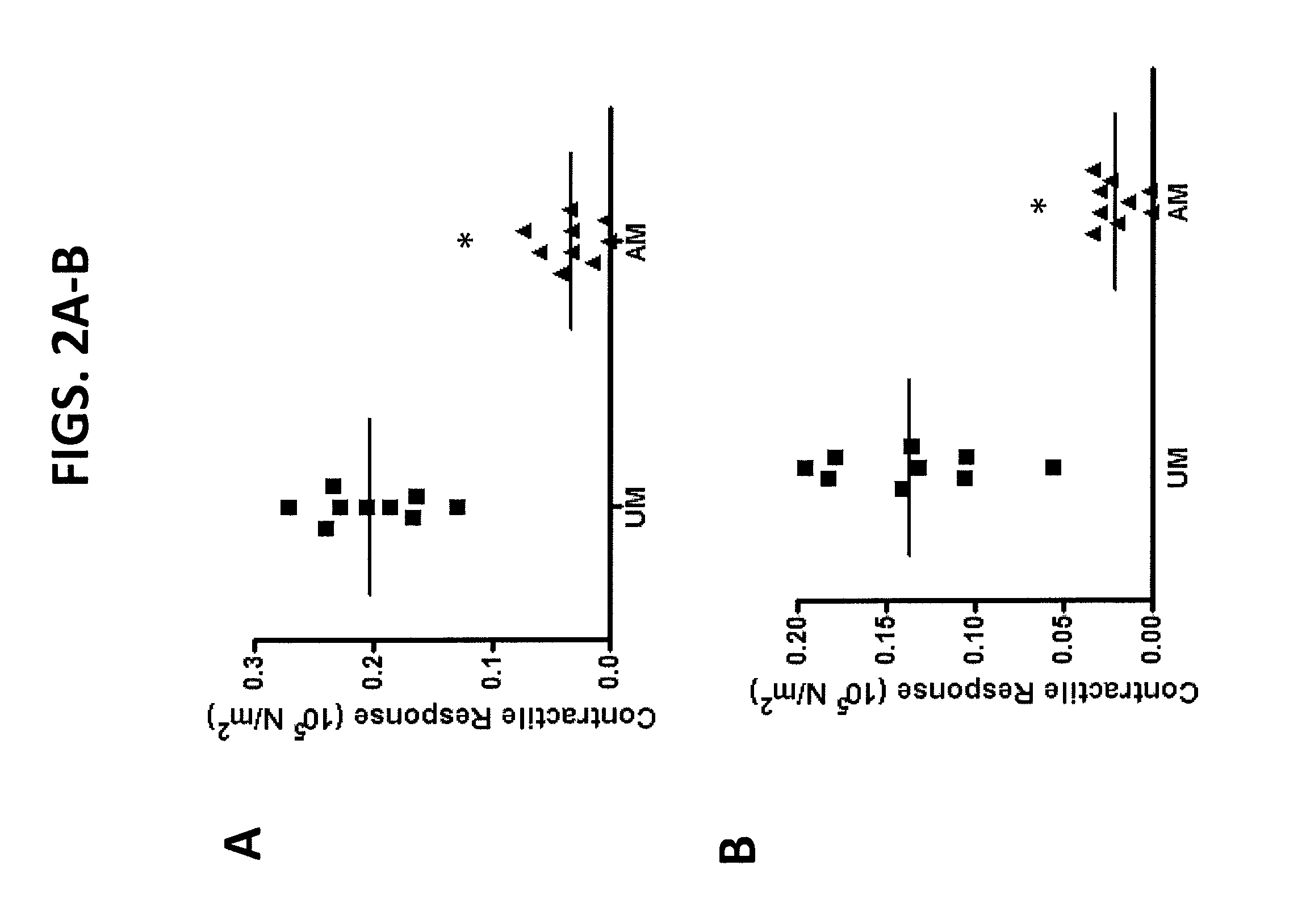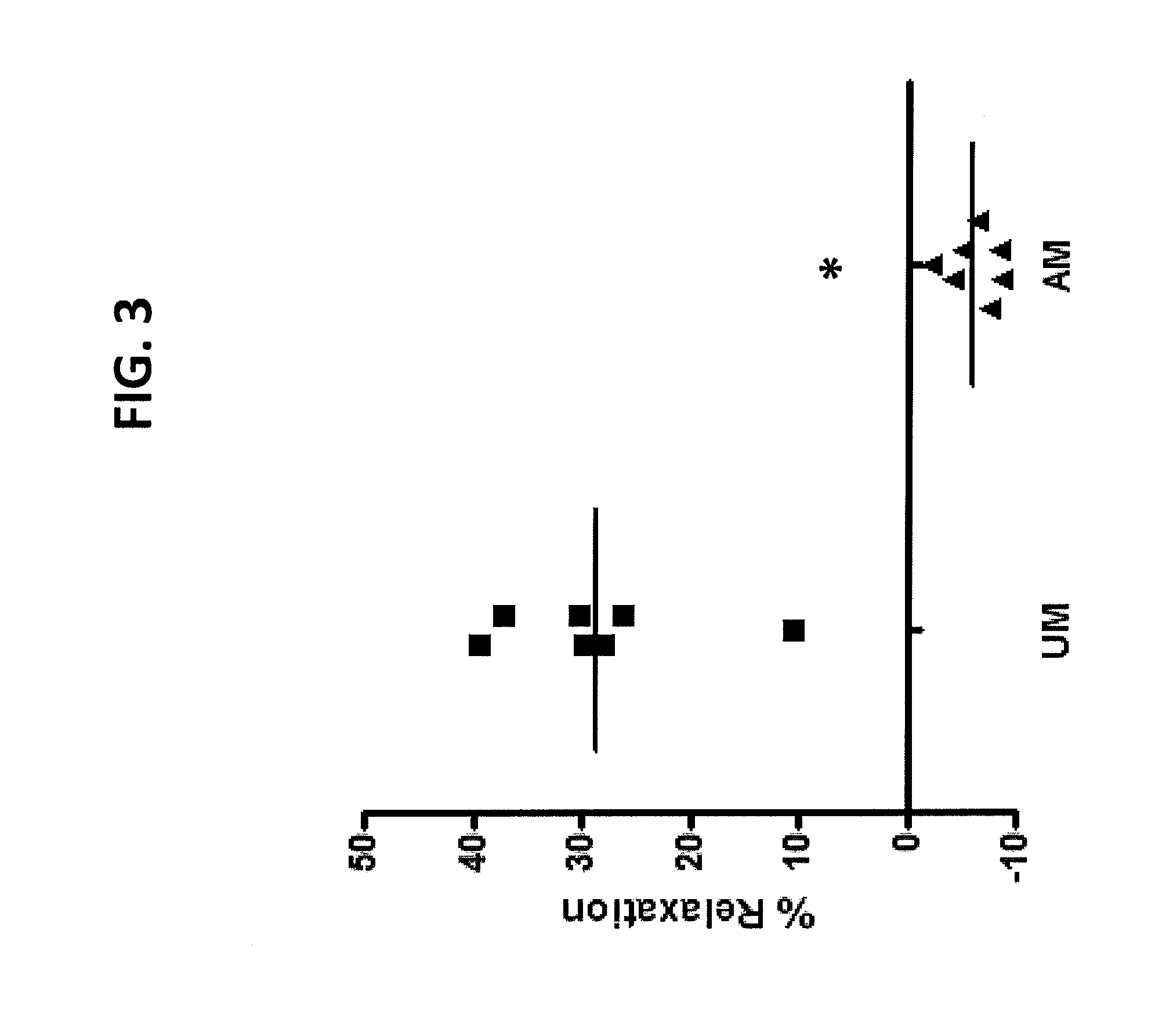Methods and compositions for vein harvest and autografting
a vein harvesting and autografting technology, applied in the field of autologous veins, vein grafts, vein preservation, tissue preservation, etc., can solve the problems of inability to carry out arterial bypass grafts, myocardial infarction, limb loss, etc., and achieve the effect of preventing the occurrence of vascular diseas
- Summary
- Abstract
- Description
- Claims
- Application Information
AI Technical Summary
Benefits of technology
Problems solved by technology
Method used
Image
Examples
example 1
Toxicity of Surgical Marking Pens to Vein Tissue
[0095]De-identified discarded segments of human saphenous vein were collected (n=66), after informed consent approved by the Institutional Review Board of the Vanderbilt University (Nashville, Tenn.), from patients undergoing coronary artery bypass or peripheral vascular bypass surgery. The veins were stored in a saline solution until the end of the surgical procedure at which time they were placed in cold transplant harvest buffer (100 mM potassium lactobionate, 25 mM KH2PO4, 5 mM MgSO4, 30 mM raffinose, 5 mM adenosine, 3 mM glutathione, 1 mM allopurinol, 50 g / L hydroxyethyl starch, pH 7.4) and stored at 4° C. The vessels were tested within 24 hours of harvest. The presense of blue markings were assessed for each HSV. Rings 1.0 mm in width were cut from segments of saphenous vein dissected free of fat and connective tissue, stripped of the endothelium and were suspended in a muscle bath containing a bicarbonate buffer (120 mM NaCl, 4....
example 2
Live Vein Cells Correlate with Functional Viability
[0102]A live cell assay was used to determined cellular viability of human saphenous vein. De-identified discarded segments of saphenous vein (n=13) were collected, after informed consent approved by the Institutional Review Board of the Vanderbilt University (Nashville, Tenn.), from patients undergoing coronary artery bypass or peripheral vascular bypass surgery. The veins were stored in a saline solution until the end of the surgical procedure at which time they were placed in cold transplant harvest buffer (100 mM potassium lactobionate, 25 mM KH2PO4, 5 mM MgSO4, 30 mM raffinose, 5 mM adenosine, 3 mM glutathione, 1 mM allopurinol, 50 g / L hydroxyethyl starch, pH 7.4). The vessels were stored in transplant harvest buffer at 4° C. and tested within 24 hours of harvest. Each vein was subject to physiologic experiment and live cell assay using 3-(4,5-Dimethyl-2-thiazolyl)-2,5-diphenyl-2H-tetrazolium bromide (MTT). To test the viabilit...
example 3
Vein Harvest Solutions and Procedures
[0104]Freshly isolated porcine saphenous vein was collected in cold transplant harvest buffer (100 mM potassium lactobionate, 25 mM KH2PO4, 5 mM MgSO4, 30 mM raffinose, 5 mM adenosine, 3 mM glutathione, 1 mM allopurinol, 50 g / L hydroxyethyl starch, pH 7.4). The vessels were tested within 24 hours of harvest and storage in transplant harvest buffer at 4° C. The vein was dissected free of fat and connective tissue and cut into 2 cm long segments. The segments were stretched to twice their resting length (stretched; n=7) or not manipulated (control; n=12). After stretching, the segments from both groups were further divided. A solution of erioglaucine (FCF, 2.6 mM, in 5% propylene glycol and water) or vehicle was then applied with a cotton swab in a longitudinal line to the untreated (FCF; n=8) or the stretched (Stretched+FCF; n=3) vein segments. The segments were incubated at room temperature for 15 min in Plasmalyte and then cut into rings. The ri...
PUM
| Property | Measurement | Unit |
|---|---|---|
| pressures | aaaaa | aaaaa |
| pressure | aaaaa | aaaaa |
| pressure | aaaaa | aaaaa |
Abstract
Description
Claims
Application Information
 Login to View More
Login to View More - R&D
- Intellectual Property
- Life Sciences
- Materials
- Tech Scout
- Unparalleled Data Quality
- Higher Quality Content
- 60% Fewer Hallucinations
Browse by: Latest US Patents, China's latest patents, Technical Efficacy Thesaurus, Application Domain, Technology Topic, Popular Technical Reports.
© 2025 PatSnap. All rights reserved.Legal|Privacy policy|Modern Slavery Act Transparency Statement|Sitemap|About US| Contact US: help@patsnap.com



